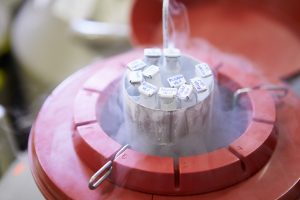 Infertility Awareness. First, a shout out for National Infertility Awareness Week. Started by the group RESOLVE, this week is the official week for recognizing fertility struggles and is dedicated to highlighting the plight of the 1 in 8 couples–as well as the non-coupled hopeful parents!–in our country suffering from infertility. It is also a time to break down the barriers and stigma standing in the way of fulfilling hopes of a family.
Infertility Awareness. First, a shout out for National Infertility Awareness Week. Started by the group RESOLVE, this week is the official week for recognizing fertility struggles and is dedicated to highlighting the plight of the 1 in 8 couples–as well as the non-coupled hopeful parents!–in our country suffering from infertility. It is also a time to break down the barriers and stigma standing in the way of fulfilling hopes of a family.
Yes, I know I often focus on the terrible, crazy, outlier cases in this column (today is no exception!). But assisted reproductive technology (“ART”), as well as the lawyers working in this area to protect families formed using ART, deserve major kudos for the incredible, positive, life-changing work they do. Keep up the good work!
And now, on to the latest outlier disaster with a new fascinating legal theory!

Meet Me At ILTACON: Opus 2 And AI Workbench
Swing by Booth 800 for a look at the latest in AI-powered case management.
With the massive popularity of IVF and other assisted reproductive technology techniques, having a baby has become a possibility for those previously offered few options. Inevitably, though, mistakes will be made. Unfortunately, because we’re dealing with the basic building blocks of starting families, those mistakes are going to be significant and heartbreaking.
Sperm Mix-Up. The latest IVF mix-up involves a couple in Singapore who sought fertility assistance from a local fertility clinic. As is common, the hopeful parents wanted genetic material from each of them (i.e, their own sperm and eggs) to be used to form their embryos for their future child.
After a successful embryo transfer, the couple was excited to find themselves pregnant, and happily delivered a little girl nine months later. However, the couple was surprised to see that the girl had features very different from themselves and their other child.
They were so suspicious that they underwent DNA testing, and discovered that their child was related to the mother, but not to the woman’s spouse, the intended father. After reviewing the incident, the clinic had accidentally switched sperm samples from the intended father with those from an anonymous donor! The parents’ suspicions were vindicated when it turned out that the donor was of Indian descent, when the parents were of German and Chinese descent. Distraught over the mistake, the couple sued the fertility clinic.

Decrypting Crypto, Digital Assets, And Web3
"Decrypting Crypto" is a go-to guide for understanding the technology and tools underlying Web3 and issues raised in the context of specific legal practice areas.
Reading Sperm Labels is Hard! (Apparently.) Of course, this fact pattern may sound familiar. In 2014, a U.S. same-sex couple experienced a similar clinical mistake. In that case, Jennifer Cramblett and her partner sought the use of a donor through a sperm bank in order to complete their family. The couple was Caucasian and chose a Caucasian sperm donor.
A misreading of the numbered sperm vials resulted in Cramblett being inseminated with sperm from an African-American man, instead of the blond, blue-haired donor she had chosen for similarity in traits to her partner. (The numbers 330 and 380 do look a lot alike. We can’t expect clinics to read all their vials correctly, can we?)
Cramblett sued the sperm bank under a wrongful life claim, arguing that while she unquestionably loved her daughter, she lacked the cultural competency to raise a mixed-race child, and also came from a racist family. Cramblett’s case was dismissed, with a judge ruling that it was inappropriate to apply a “wrongful birth” theory to a healthy child.
Loss of Genetic Affinity. In the Singapore couple’s case, the court was careful to avoid the “wrongful birth” theory, or to imply that there was anything “wrong” with the child. Instead, the court looked to a law review article (so keep churning out those law review articles, professors!), which argued that parents have a strong desire to be genetically related to their child, and then assigned monetary value to that strong desire.
The court recognized that the mother’s “desire to have a child of her own, with her husband, is a desire that is a basic human impulse, and its loss is keenly and deeply felt…. The ordinary human experience is that parents and children are bound by ties of blood and this fact of biological experience – heredity – carries deep socio-cultural significance… And when, as in the present case, a person has been denied this experience due to the negligence of others, then she has lost something of profound significance and has suffered a serious wrong.”
Obviously, this is a sticky area. It’s made more sticky by issues of race, as we saw on the Ohio matter. We can all agree that no child should be labeled of any less “value” based on race. Outside of that consideration, however, it is reasonable that hopeful parents should be able to count on clinics to meet expectations when it comes to the understood genetic make-up of their children. And when there’s a mix-up, clinics should face liability.
One article covering this story quoted senior research scholar Todd Kuiken, with the Genetic Engineering and Society Center at North Carolina State University: “They attached damages to the genetic makeup of the child, rather than the mistake. That’s the part that makes it uncomfortable. This can take you in all sort of [f**ked] up directions.”
Although not the most eloquent of statements, Kuiken has a point. A new common law claim based on a “loss of genetic affinity” legal theory poses complex issues as to the value of our genetic make-up and should be handled with care.
Earlier: White Woman Learns What It’s Like To Be A Black Mother, Sues
 Ellen Trachman is the Managing Attorney of Trachman Law Center, LLC, a Denver-based law firm specializing in assisted reproductive technology law, adoption, and estate planning, and Co-Director of Colorado Surrogacy, LLC, a surrogacy matching and support agency. You can reach her at [email protected].
Ellen Trachman is the Managing Attorney of Trachman Law Center, LLC, a Denver-based law firm specializing in assisted reproductive technology law, adoption, and estate planning, and Co-Director of Colorado Surrogacy, LLC, a surrogacy matching and support agency. You can reach her at [email protected].